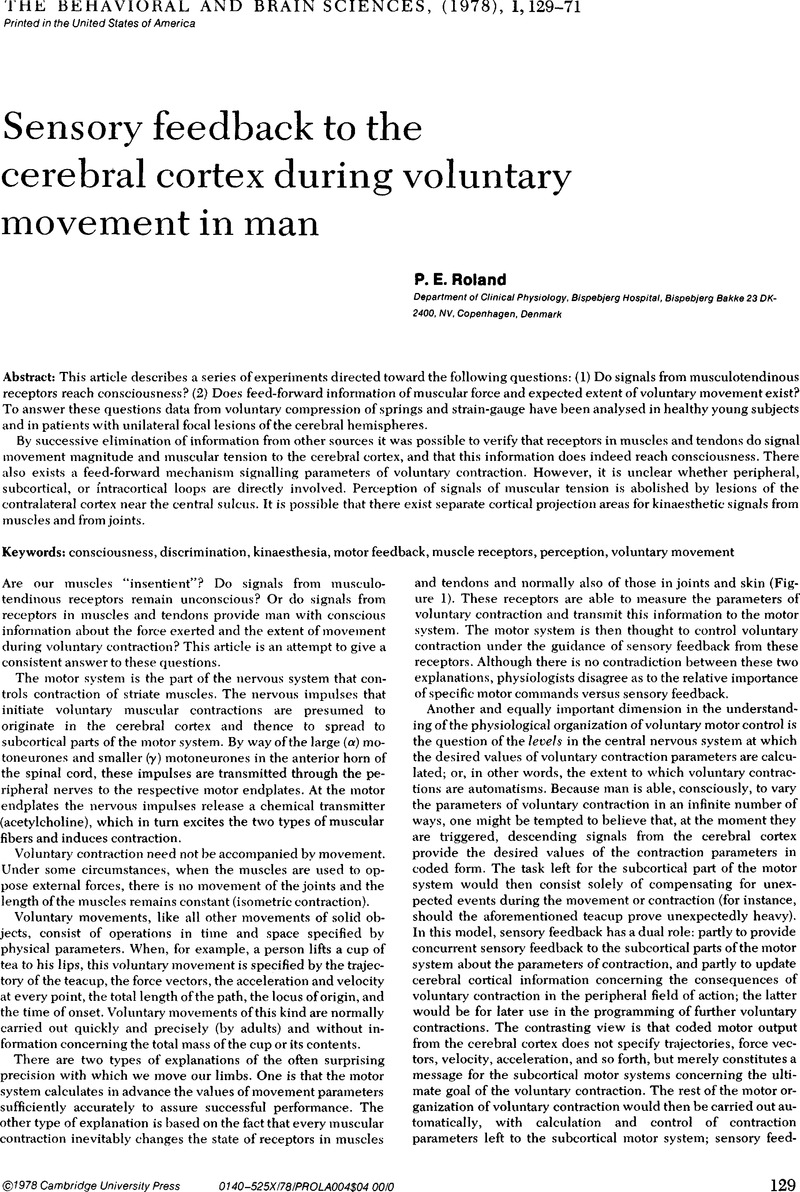No CrossRef data available.
Article contents
What constitutes “proof” in the study of neural control of movement?
Published online by Cambridge University Press: 04 February 2010
Abstract
An abstract is not available for this content so a preview has been provided. Please use the Get access link above for information on how to access this content.

- Type
- Open Peer Commentary
- Information
- Copyright
- Copyright © Cambridge University Press 1978
References
REFERENCES
Chez, G., Vicario, D. (1977) Isometric tracking in the cat. Poster Presentation, Society for Neuroscience, Abstract No. 862, p. 271.Google Scholar
Evarts, E. V., and Fromm, C. (1977) Motor cortex units discharging most intensively with small precisely controlled arm movements are most sensitive to sensory inputs arising from the arm. Poster Presentation, Society for Neuroscience, Abstract No. 859, p. 271.Google Scholar
Libet, B. (1965) Cortical Activation in Conscious and Unconscious Experience. Perspectives in Biology and Medicine, 9:77.CrossRefGoogle ScholarPubMed
Polit, A. … Bizzi, E.Properties of the motor programs underlying visually triggered arm movements in monkeys. Society for Neuroscience, Abstract No. 882, p. 276.Google Scholar


